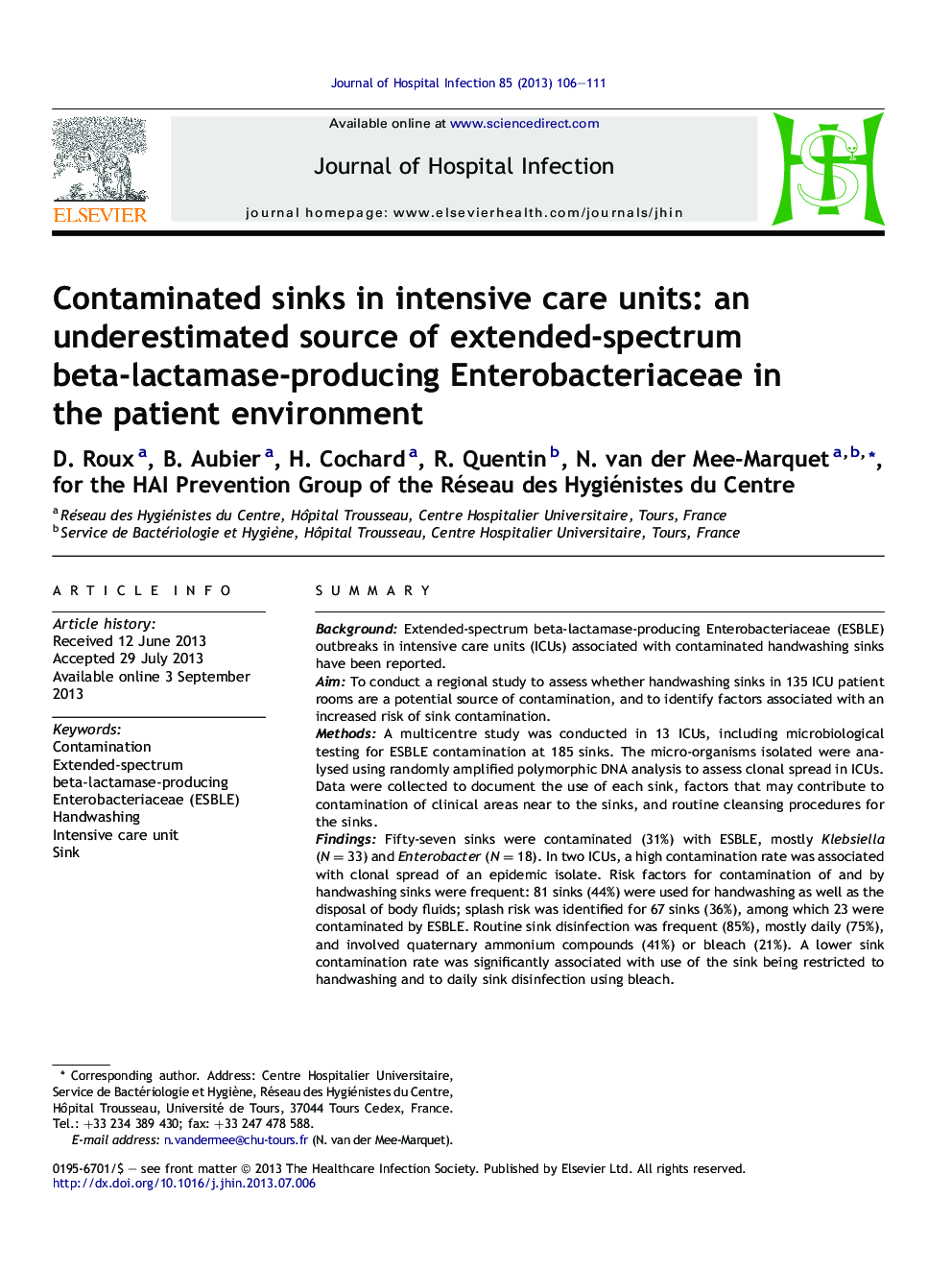| کد مقاله | کد نشریه | سال انتشار | مقاله انگلیسی | نسخه تمام متن |
|---|---|---|---|---|
| 3371711 | 1219222 | 2013 | 6 صفحه PDF | دانلود رایگان |

SummaryBackgroundExtended-spectrum beta-lactamase-producing Enterobacteriaceae (ESBLE) outbreaks in intensive care units (ICUs) associated with contaminated handwashing sinks have been reported.AimTo conduct a regional study to assess whether handwashing sinks in 135 ICU patient rooms are a potential source of contamination, and to identify factors associated with an increased risk of sink contamination.MethodsA multicentre study was conducted in 13 ICUs, including microbiological testing for ESBLE contamination at 185 sinks. The micro-organisms isolated were analysed using randomly amplified polymorphic DNA analysis to assess clonal spread in ICUs. Data were collected to document the use of each sink, factors that may contribute to contamination of clinical areas near to the sinks, and routine cleansing procedures for the sinks.FindingsFifty-seven sinks were contaminated (31%) with ESBLE, mostly Klebsiella (N = 33) and Enterobacter (N = 18). In two ICUs, a high contamination rate was associated with clonal spread of an epidemic isolate. Risk factors for contamination of and by handwashing sinks were frequent: 81 sinks (44%) were used for handwashing as well as the disposal of body fluids; splash risk was identified for 67 sinks (36%), among which 23 were contaminated by ESBLE. Routine sink disinfection was frequent (85%), mostly daily (75%), and involved quaternary ammonium compounds (41%) or bleach (21%). A lower sink contamination rate was significantly associated with use of the sink being restricted to handwashing and to daily sink disinfection using bleach.ConclusionsIn ICUs, contaminated sinks are a potential source of ESBLE in the environment of the patient, a problem that may be underestimated by ICU teams. Relatively simple measures may result in a rapid improvement of the situation, and a significant decrease of the risk of exposure of ICU patients to multiresistant Enterobacteriaceae.
Journal: Journal of Hospital Infection - Volume 85, Issue 2, October 2013, Pages 106–111